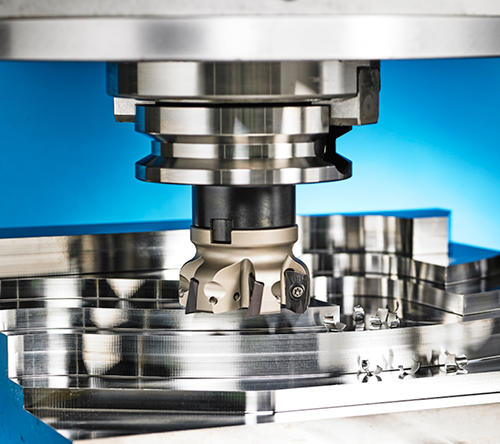Don't have an account?
Creating an account has many benefits: check out faster, keep more than one address, track orders and more.
Or
Checkout as a Guest
Place your order without creating an account for extra convenience.
Which is Best…. 90 Degree Indexable Milling vs High Feed Indexable Milling?
Contents
90 Degree Indexable Milling vs High Feed Indexable Milling
In modern CNC machining, indexable milling has revolutionized metal removal efficiency and cost per part. Among the most popular strategies are 90 degree shoulder milling and high feed milling. Each approach serves a different purpose and thrives under specific conditions. In this expert guide, we break down the key differences, benefits, drawbacks, and when to use each. We'll also take a closer look at some leading indexable systems available from Cutwel.
What is 90° Indexable Milling?
90° milling uses cutters designed to produce true square shoulders, typically with inserts that have a neutral or positive lead angle. These cutters are ideal for accurate, high-quality shoulder work.
Pros:
-
True 90° shoulder finish - No secondary operation needed.
-
Excellent wall accuracy - Ideal for parts with tight tolerance features.
-
Good surface finish - Especially with wiper insert options.
-
Reliable and predictable - Great for general-purpose milling.
Cons:
-
Lower metal removal rate - Compared to high feed milling, especially in deep cuts.
-
Higher radial cutting forces - May not suit less rigid machines or workpieces.
-
Slower feed rates - Not optimized for high productivity roughing.
What is High Feed Indexable Milling?
High feed milling (HFM) uses tools with a small lead angle, typically between 10°–20°, which directs cutting forces axially (into the spindle). These cutters are designed for shallow depth but extremely fast feed rates.
Pros:
-
Extremely high metal removal rates - Ideal for roughing.
-
Low radial cutting forces - Safer on lighter or less rigid machines.
-
Longer tool life - Due to optimized chip thinning.
-
Improved productivity - Perfect for high-volume environments.
Cons:
-
Poor shoulder accuracy - Not suitable for square shoulder finishes.
-
Surface finish limitations - Requires additional finishing passes.
-
Limited depth of cut - Less effective in deep cavity milling.
Technical Comparison Table
| Feature | 90° Indexable Milling | High Feed Milling |
| Shoulder Accuracy | Excellent (true 90°) | Poor (ramped profile) |
| Metal Removal Rate | Moderate | Very High |
| Surface Finish | Very Good | Fair to Good |
| Machine Power Needed | Higher (radial forces) | Lower (axial forces) |
| Depth of Cut (Ap) | Moderate to Deep | Shallow |
| Feed Rates (Fz) | Moderate | Very High |
| Tool Life | Good | Excellent (with proper setup) |
Applications at a Glance
-
Use 90° milling for: finishing, accurate shoulders, dies and moulds, aerospace parts, and pockets with vertical walls.
-
Use high feed milling for: rapid stock removal, 3D contouring, pre-finishing large cavities, and unstable setups.
Cutwel Indexable Milling Systems Overview
Cutwel offers a wide range of high-performance indexable milling tools suitable for both strategies. Here are four standout systems:
-
Type: 90° Shoulder Milling
-
Features: Multi-edge inserts, high ramping capability, excellent for square shoulder work.
-
Best For: Precision milling, general machining, pocketing with straight walls.
-
Type: 90° Shoulder Milling
-
Features: 3-edge inserts for cost-efficiency, high rigidity body, excellent surface finishes.
-
Best For: High-accuracy finishing and semi-finishing applications.
-
Type: High Feed Milling
-
Features: 4-edge inserts, specially designed chip thinning geometry, low cutting resistance.
-
Best For: Roughing on low-power machines, deep cavity mold work, or unstable setups.
-
Type: High Feed Milling
-
Features: Double-sided inserts (8 cutting edges), cost-efficient roughing tool, strong insert clamping.
-
Best For: Maximum metal removal at low cost per edge, roughing in steels and cast iron.
Expert Takeaway
-
Go 90° when precision and shoulder accuracy matter.
-
Go High Feed when material needs to be cleared - fast.
The smart approach? Use both in your process. Start with high feed for roughing, then finish with a 90° tool for clean-up and accuracy.
Need help choosing the right tool for your material or machine? Please contact our technical team on 01924 869 615 or email sales@cutwel.net.

